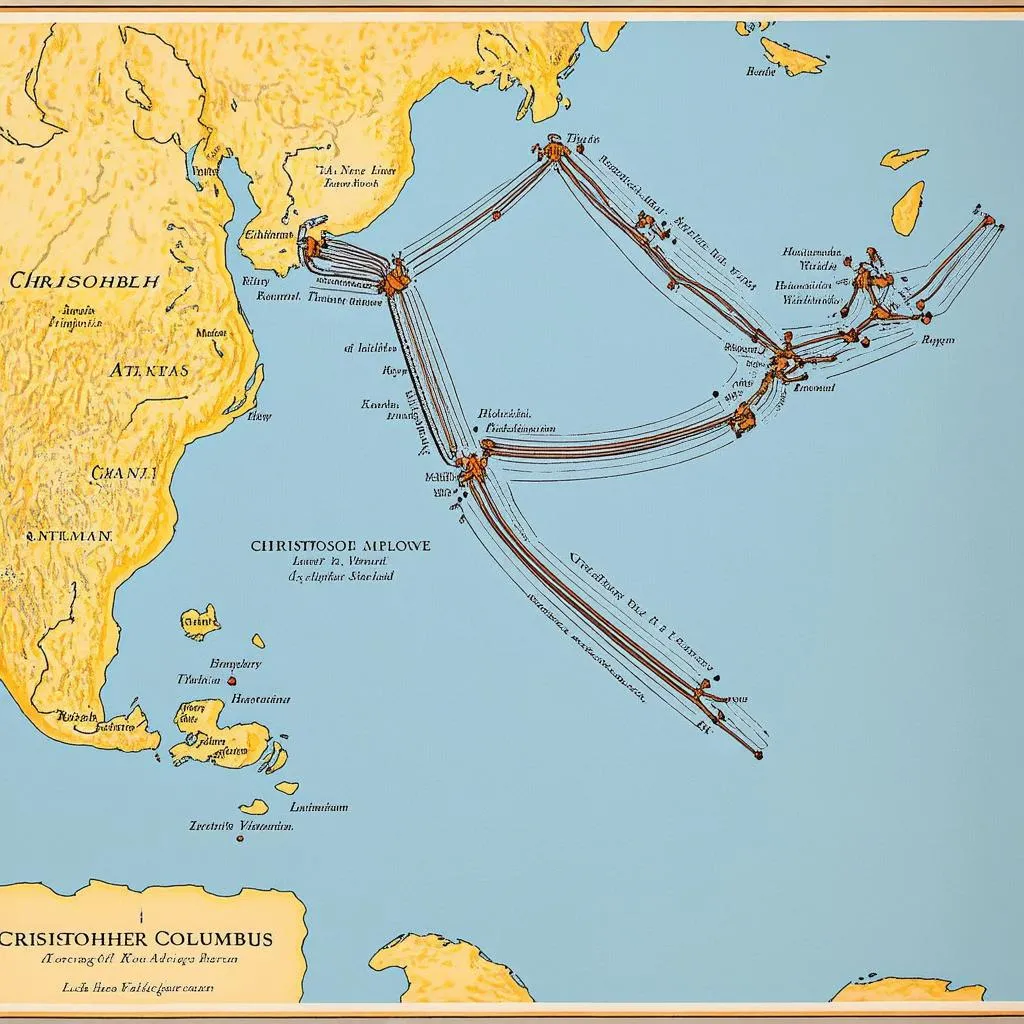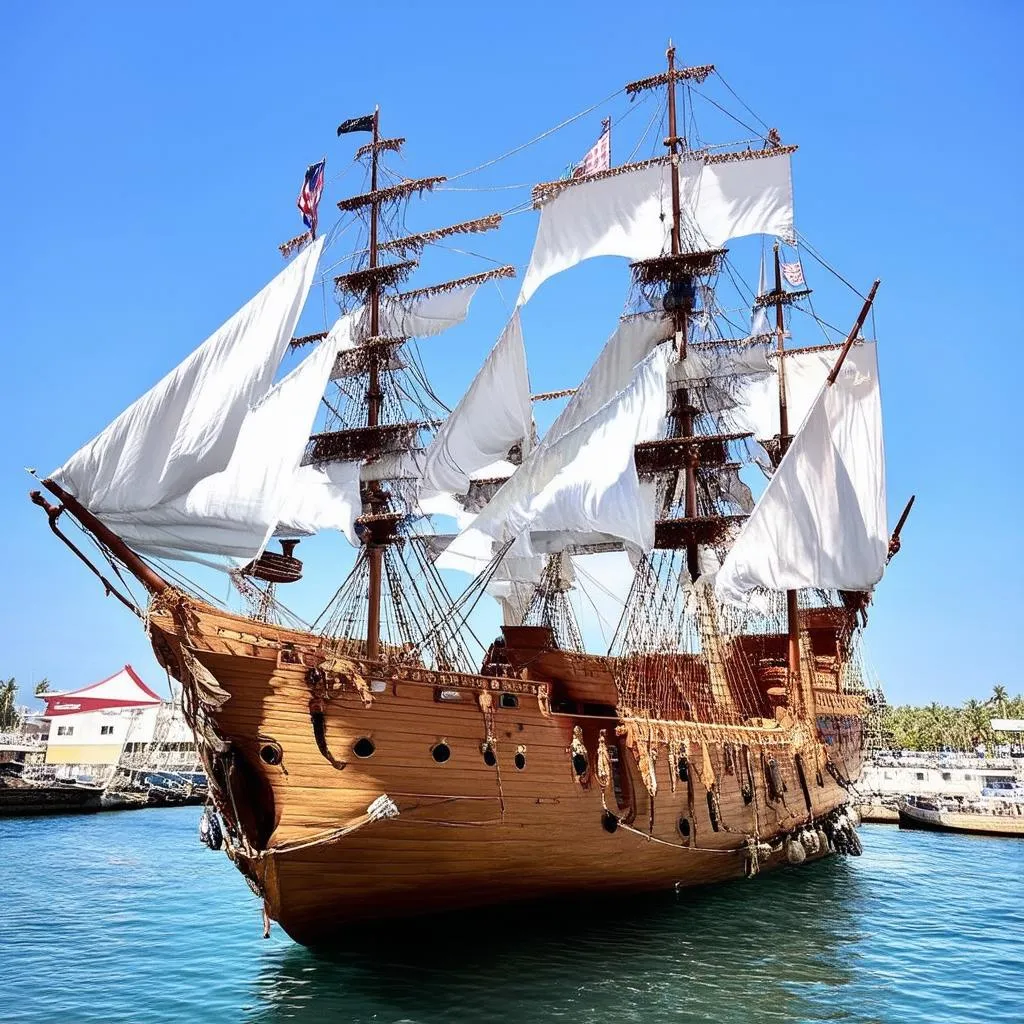Have you ever wondered what drove Christopher Columbus across the vast Atlantic? Imagine setting sail into the unknown, fueled by the belief that the world was round and Asia lay just beyond the horizon. While we now know Columbus didn’t quite reach Asia, his voyages irrevocably changed the world. Let’s delve into the map of Columbus’s travels to America, exploring the routes he took and the impact they had.
Unraveling the Past: Mapping Columbus’s Four Voyages
Columbus didn’t just make one trip across the Atlantic; he embarked on four voyages between 1492 and 1502. Each voyage was a daring adventure, fraught with challenges and discoveries. A map of Columbus’s travels reveals a fascinating web of routes crisscrossing the Caribbean Sea:
First Voyage (1492-1493): Land Ahoy!
- Route: Palos de la Frontera, Spain – Canary Islands – across the Atlantic – San Salvador (Bahamas) – Cuba – Hispaniola.
This voyage, funded by the Spanish monarchs, aimed to find a westward sea route to Asia. Instead, Columbus landed in the Bahamas, a moment often considered the “discovery” of the New World for Europeans.
Second Voyage (1493-1496): Establishing a Foothold
- Route: Cadiz, Spain – Canary Islands – Dominica – Guadeloupe – Puerto Rico – Hispaniola – Cuba.
This voyage focused on exploration, colonization, and establishing a Spanish presence in the lands Columbus encountered. It was during this voyage that Columbus first sighted the island that would later be named Puerto Rico.
Third Voyage (1498-1500): Facing Troubles in Paradise
- Route: Sanlúcar de Barrameda, Spain – Cape Verde Islands – Trinidad – Venezuela – Hispaniola.
This voyage took Columbus further south, reaching the coast of South America for the first time. However, this voyage was marred by difficulties and unrest in the Hispaniola colony.
Fourth Voyage (1502-1504): Seeking a Passage to the West
- Route: Cadiz, Spain – Martinique – Central America – Panama – Hispaniola – Jamaica – Spain.
Columbus’s final voyage aimed to find a westward passage through the Americas to Asia. He explored the coastlines of Central America, believing he was finally nearing the Asian mainland.
 Columbus's Voyages
Columbus's Voyages
Planning Your Own Voyage of Discovery: Exploring the Legacy of Columbus Today
While we can’t turn back time and sail with Columbus, we can certainly follow in his footsteps, albeit with modern comforts. Many of the places Columbus visited are popular tourist destinations today:
- The Bahamas: Relax on pristine beaches, swim with dolphins, and experience the vibrant culture of these beautiful islands.
- Cuba: Immerse yourself in the rich history, music, and classic car culture of this captivating Caribbean nation.
- Dominica: Explore lush rainforests, volcanic landscapes, and stunning waterfalls on this “Nature Isle” of the Caribbean.
- Spain: Visit the ports from which Columbus set sail, like Palos de la Frontera and Cadiz, and delve into the maritime history of this seafaring nation.
Charting a Course Through History: FAQs about Columbus’s Travels
Q: Did Columbus really “discover” America?
A: While Columbus’s voyages marked a turning point in history, it’s crucial to remember that indigenous people had been living in the Americas for thousands of years prior to his arrival.
Q: Why did Columbus sail west?
A: Columbus believed the Earth was a sphere and that sailing west would offer a shorter route to Asia, the source of valuable spices and trade goods.
Q: Are there any museums dedicated to Columbus’s voyages?
A: Yes, several museums, like the Museo Naval in Madrid, Spain, and the Galata Museo del Mare in Genoa, Italy (Columbus’s birthplace), showcase artifacts and information about his expeditions.
 Replica of Columbus's Ship
Replica of Columbus's Ship
Navigating the Waters of History and Heritage
Exploring the map of Columbus’s travels is like opening a window into a pivotal moment in history. His voyages sparked an era of exploration, cultural exchange, and unfortunately, also colonization and its lasting impacts. As we retrace his routes, it’s essential to do so with a balanced perspective, acknowledging both the triumphs and the complexities of this period. For further exploration of maritime history and travel inspiration, visit travelcar.edu.vn. What other historical journeys pique your interest? Share your thoughts in the comments below!